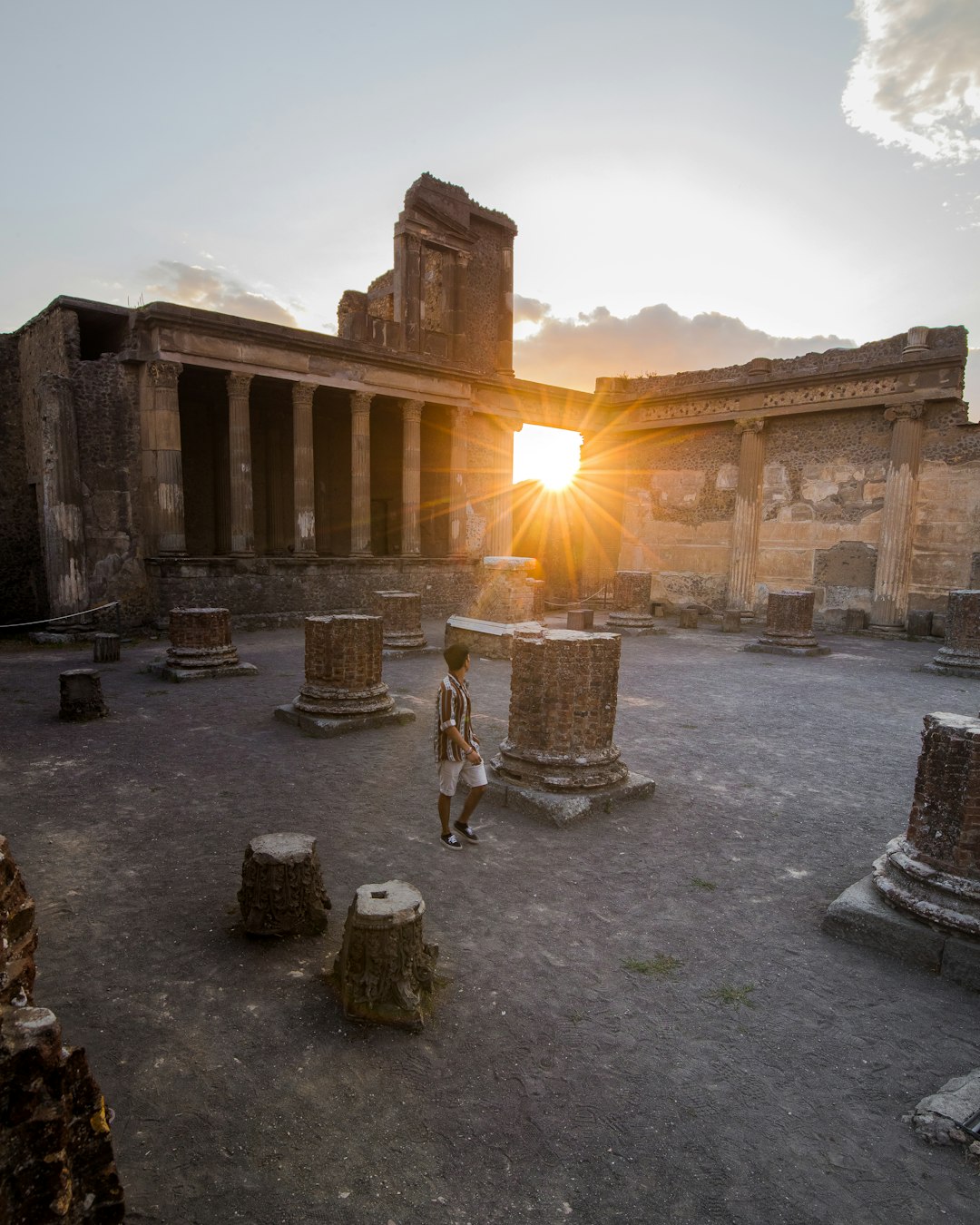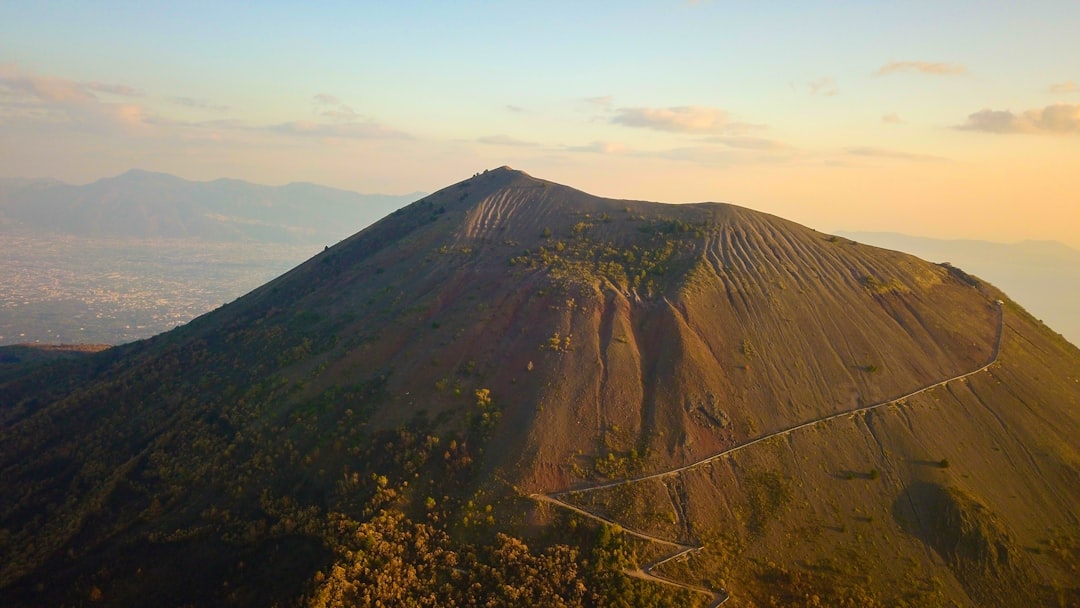The Terrible Last Hours of the Pompeii Residents
Dying in Pompeii under the Mount Vesuvius volcanic eruption was a horrifying experience.

What Is the Worst Way to Die?
There can be many answers to this question. Getting eaten alive by a shark, being burned at the stake, drowning, beheading, or crucifixion if you are adventurous. The possibilities are endless.
Ok, how about getting your blood boiled, brains turned into tough glass due to intense heat, ‘heat-shocked’ into a sort of instant rigor mortis, and slowly getting ‘baked’ and asphyxiated by volcanic ash and toxic fumes for a period of time? And all of this happening simultaneously on your body.
Gruesome? isn’t it?
That is what happened to the residents of Pompeii on August 24, 79 AD, one day after the Roman holiday of Volcanalia, dedicated to the god of fire. At noon Mount Vesuvius erupted, spewing ash hundreds of feet into the air for 18 hours straight.
Eventually, a deadly flow of blisteringly hot volcanic lava and gas surged down, enveloping the city, filling courtyards, blocking doors, and collapsing roofs. As Pliny, the Younger, the Roman historian, reported about the incident,
“…the buildings were now shaking with violent shocks, and seemed to be swaying to and fro as if they were torn from their foundations. Outside, on the other hand, there was the danger of failing pumice stones, even though these were light and porous; however, after comparing the risks they chose the latter. As a protection against falling objects, they put pillows on their heads tied down with cloths. “
He then brings out the chaos and the misery of the people suffering in vivid detail.
“You could hear the shrieks of women, the wailing of infants, and the shouting of men; some were calling their parents, others their children or their wives, trying to recognize them by their voices. People bewailed their own fate or that of their relatives, and there were some who prayed for death in their terror of dying. Many besought the aid of the gods, but still more imagined there were no gods left, and that the universe was plunged into eternal darkness for evermore.”
The standard historical interpretation of that horrific event was that the toxic gases and thick chunks of ash released from the volcano instantly choked every inhabitant to death.
However, new studies conducted by British and Italian scholars prove that some residents had died an excruciating death by slowly getting ‘baked’ and suffocated by the fumes for an extended period of time.
It would have been one of the most horrifying ways to die in history.

Pompeii Residents Were Wealthy
Pompeii was home to many wealthy Romans who built grand villas filled with lavish decorations and works of art.
The lavish city boasted many things, including a large public market, a palaestra, a sports ground, two theatres, an amphitheater, a gymnasium with a natatorium, or a swimming pool, temples dedicated to deities, and at least four public baths.
The city also has the Pistrinum, a mill, and the Thermopolium, which was a fast food place that served both food and beverages, multiple cauponae, or cafes,the Lupanar or the brothel where prostitutes plied their trade,and large hotels at the outskirts of the city.
On August 24, 79 CE, all hell broke loose as a massive volcanic eruption from Mount Vesuvius spewed ash and white pumice over Pompeii at a rate of 4-6 inches/hr.
Soon the pumice heated the roofs to immense temperatures as a 20-mile (32 km) high eruption cloud sent pyroclastic surges of gas and rock fragments into the city. The temperature of this cloud is estimated at 430-500° F (220-260° C).
The Residents Died Horribly
At such high temperatures, archaeologists expected that the people would have died instantly, sparing them the misery of death. But unfortunately, that was not the case, as a new study captured the last miserable hours of the Pompeii residents.
The study on more than 150 skeletons concluded that while most of the people died instantly from the heat, the less fortunate ones suffered slowly as their bodies began to cook in the heat. Their skin and muscles swelled, driving moisture from soft tissue inward toward the bone. As the team who conducted the research says.
“This slow heat searing would have baked the skeleton without burning it.”
Pierpaolo Petrone, a physical and forensic anthropologist at the University of Naples, also argues that some bodies elsewhere in another nearby city Herculaneum, also show signs of dramatic thermal trauma.
As per him, a few of the skulls had fractures radiating from a central point. These fractures prove that the people's skulls exploded due to the blinding heat as their brains boiled over and pressure built up inside their skulls.
And in some cases, a black, hardened substance was found inside the skull. As per Petrone, the black substance was hardened glass created by solidifying a person’s molten brain after cooling. The people died a rather tragic death, as Petrone says.
“I never saw [anything like this] before in 25 years of excavation and study of this site: It’s astonishing,”
Post Eruption
The eruption destroyed the city entirely, as Pliny the Younger wrote.
"Broad sheets of flame were lighting up many parts of Vesuvius; their light and brightness were the more vivid for the darkness of the night... it was daylight now elsewhere in the world, but there the darkness was darker and thicker than any night."
Pompeii was buried under 82 feet (25 m) of volcanic ash and pumice. Despite robbers making off with gold statues from temples and marble from walls, the city was almost entirely forgotten until 1592, when workers first discovered it by digging a channel to divert water from the river Sarno. It was covered back and forgotten again.
Archaeologists took another 400 years to bring to light its magnificent opulence. Today Pompeii is declared a UNESCO World Heritage Site and is host to 2.5 million visitors annually.
And while we appreciate its stupendous opulence, let us also spare a thought to the unknown people of Pompeii who suffered for hours as their world crumbled to dust around them. Nature can be callous at times, and the Pompeii disaster is nature at work at its furious worst.





I knew it was gruesome, but yikes! This is one of my dream places to visit, for the history and the beauty. And this piece is fascinating.
Thank you for your history posts. I read them all and learn from most all of them.